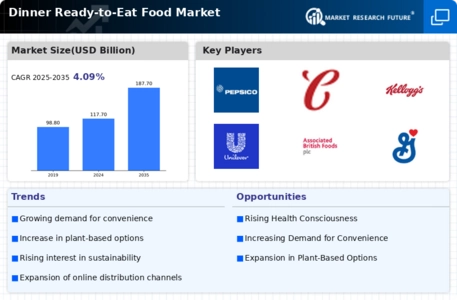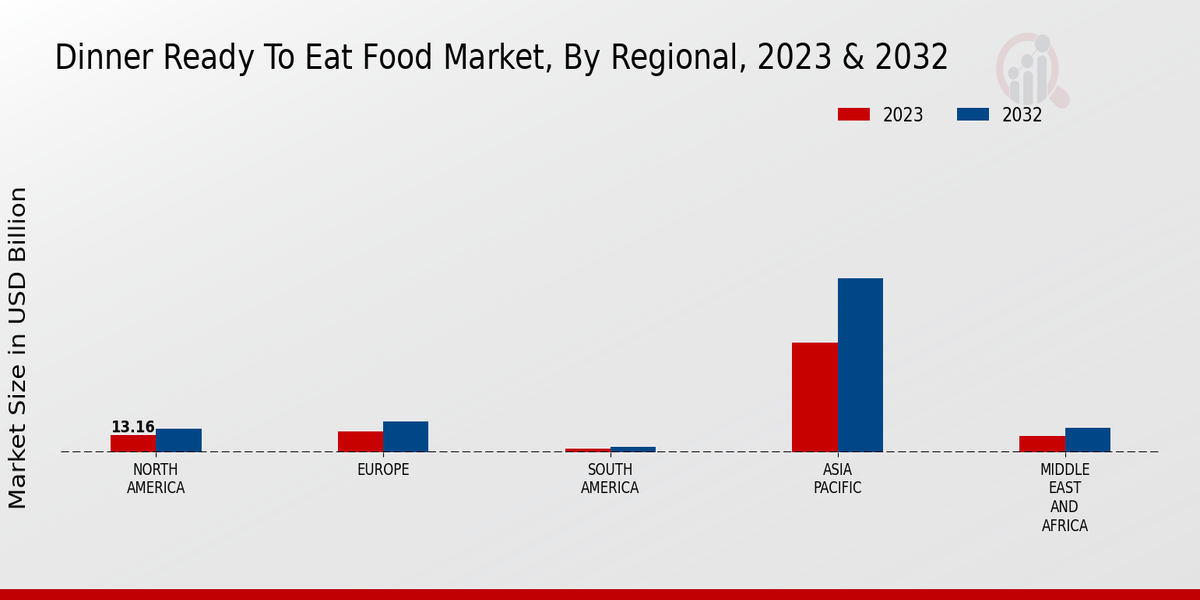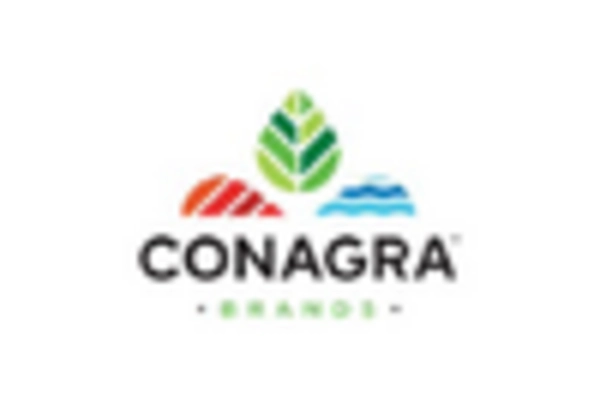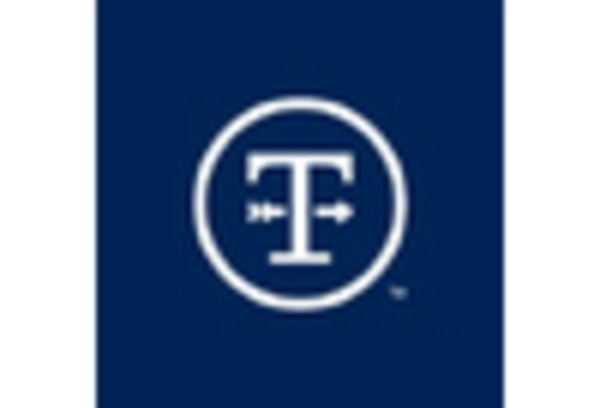E-commerce Growth
The Dinner Ready-to-Eat Food Market is witnessing a significant transformation due to the rapid growth of e-commerce platforms. With the increasing penetration of the internet and mobile devices, consumers are increasingly turning to online shopping for their meal solutions. Data suggests that online sales of ready-to-eat meals have surged by over 30% in recent years, indicating a shift in consumer purchasing behavior. This trend is further fueled by the convenience of home delivery services and subscription models that cater to busy lifestyles. As e-commerce continues to expand, companies in the Dinner Ready-to-Eat Food Market are likely to invest in digital marketing strategies and enhance their online presence to capture this growing segment. The ability to reach consumers directly through online channels may redefine traditional distribution models and create new opportunities for market growth.
Health and Wellness Trends
The Dinner Ready-to-Eat Food Market is increasingly influenced by the rising health consciousness among consumers. There is a notable shift towards meals that are not only convenient but also nutritious. Recent surveys indicate that nearly 70% of consumers are actively seeking healthier meal options, which has led to a proliferation of products that emphasize organic ingredients, reduced sodium, and balanced nutrition. This trend suggests that manufacturers are compelled to reformulate existing products and introduce new lines that align with health trends. The integration of superfoods and functional ingredients into ready-to-eat meals is becoming commonplace, reflecting a broader societal shift towards wellness. As consumers prioritize health in their dietary choices, the Dinner Ready-to-Eat Food Market is likely to adapt, ensuring that health-oriented offerings remain at the forefront of product development.
Convenience and Time-Saving
The Dinner Ready-to-Eat Food Market is experiencing a surge in demand driven by the increasing need for convenience among consumers. Busy lifestyles and the growing number of dual-income households have led to a preference for meals that require minimal preparation time. According to recent data, approximately 60% of consumers express a desire for quick meal solutions, which has prompted manufacturers to innovate and expand their product lines. This trend indicates that ready-to-eat meals are not merely a luxury but a necessity for many households. As a result, companies are focusing on developing a variety of options that cater to different dietary preferences, thereby enhancing their market appeal. The convenience factor is likely to remain a pivotal driver in the Dinner Ready-to-Eat Food Market, influencing purchasing decisions and shaping product offerings.
Diverse Culinary Preferences
The Dinner Ready-to-Eat Food Market is increasingly shaped by the growing diversity of culinary preferences among consumers. As globalization continues to influence food culture, there is a rising demand for meals that reflect various ethnic cuisines and flavors. Recent studies indicate that consumers are more adventurous in their food choices, with a significant portion expressing interest in trying international dishes. This trend has prompted manufacturers to expand their product offerings to include a wider array of flavors and ingredients, catering to diverse palates. The incorporation of regional specialties and authentic recipes into ready-to-eat meals is becoming a strategic focus for companies. As the Dinner Ready-to-Eat Food Market evolves, the ability to offer diverse culinary options may serve as a competitive advantage, attracting a broader customer base and enhancing brand loyalty.
Sustainability and Ethical Sourcing
The Dinner Ready-to-Eat Food Market is increasingly influenced by consumer demand for sustainability and ethical sourcing practices. As awareness of environmental issues grows, consumers are more inclined to support brands that prioritize eco-friendly packaging and responsibly sourced ingredients. Recent surveys indicate that a substantial percentage of consumers are willing to pay a premium for products that align with their values regarding sustainability. This trend has prompted companies to adopt greener practices, such as reducing plastic waste and sourcing ingredients from sustainable farms. The emphasis on sustainability not only appeals to environmentally conscious consumers but also enhances brand reputation. As the Dinner Ready-to-Eat Food Market continues to evolve, the integration of sustainable practices may become a key differentiator, influencing consumer choices and driving market growth.


















Leave a Comment